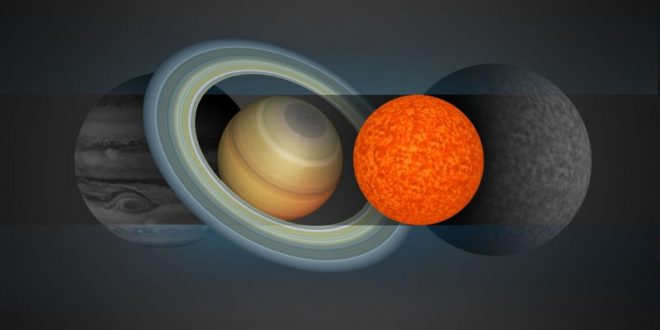A team of astronomers led by the University of Cambridge have discovered the smallest star yet.
EBLM J0555-57Ab is located about six hundred light years away and is a sliver larger than that of Saturn, with a gravitational pull at its stellar surface about 300 times stronger than what humans feel on Earth.
The news bodes well for the detection of other small stars, which are the most likely to host Earth-like planets with the potential to support life.
For a celestial body to qualify as a “star,” its core must contain hydrogen fusing into helium, a nuclear reaction that helps power the star. EBLM J0555-57Ab has just enough mass to create the pressure that enables this reaction: With any less mass, it would be a brown dwarf, which is an object in between a planet and a star.
“Our discovery reveals how small stars can be,” Alexander Boetticher, the study’s lead author, said in a statement.
Small stars like this one aren’t just cool because they’re novel. They’re crucial to our ongoing search for Earth-like planets that might support life, because they’re the most likely to host such planets.
TRAPPIST-1, for example, is a relatively cool dwarf star; in February, astronomers discovered that it hosts a whopping seven Earth-like planets, three of which have the potential to possess water. TRAPPIST-1 and EBLM J0555-57Ab have similar masses, but the latter’s radius is almost a third smaller than TRAPPIST-1.
A “small” star has a mass and radius measuring less than 20 percent of that of the Sun and is actually the most common type in the universe. Unfortunately, it’s hard to detect an object that is so dim and tiny; it can even be more difficult than locating a planet, which does not emit light.
“This star is smaller, and likely colder, than many of the gas giant exoplanets that have so far been identified,” said von Boetticher. “While a fascinating feature of stellar physics, it is often harder to measure the size of such dim low-mass stars than for many of the larger planets. Thankfully, we can find these small stars with planet-hunting equipment, when they orbit a larger host star in a binary system. It might sound incredible, but finding a star can at times be harder than finding a planet.”
Luckily, EBLM J0555-57Ab is located in a “binary system,” which means that it’s actually one of two stars within a single solar system (most stars are part of multi-stellar systems). Astronomers were able to detect EBLM J0555-57Ab with a method typically used for planet-hunting; they observed that the larger star in the system darkened at regular intervals and deduced that an orbiting smaller star was passing in front of it.
Astronomers will continue to use this method to detect small stars. It could be only a matter of time before we find one that hosts a planet with life; NASA certainly thinks so.
Agencies/Canadajournal
 Canada Journal – News of the World Articles and videos to bring you the biggest Canadian news stories from across the country every day
Canada Journal – News of the World Articles and videos to bring you the biggest Canadian news stories from across the country every day



